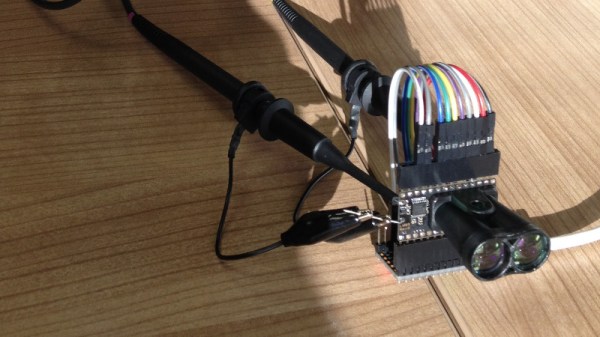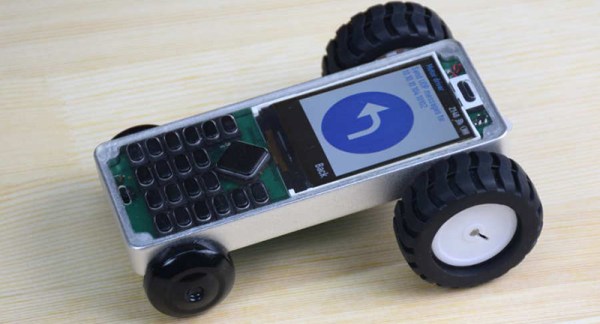You’re too busy to read more than this intro paragraph. We all are. Your interest might get piqued enough to skim, but you can’t read the full thing. Our lives all resemble the White Rabbit, constantly late for our next thing, never enjoying the current thing. You feel simultaneously super productive and yet never productive enough to be satisfied. You yearn for a Jarvis that can automate the mundane aspects of your projects, and yet the prospect of building a Jarvis causes anxiety about not having enough time for yet another project. You see another YouTuber showing off not only a great build but also impressive video production and editing skills. You are suffering from Time Debt, and the solution requires as much discipline and tenacity as escaping from financial debt.
Day: February 6, 2019
Open Source LIDAR Lets You Get Down To The Nitty Gritty
If you’re unfamiliar with LIDAR, you might have noticed it sounds a bit like radar. That’s no accident – LIDAR is a backronym standing for “light detection and ranging”, the word having initially been created as a combination of “light” and “radar”. The average person is most likely to have come into contact with LIDAR at the business end of a police speed trap, but it doesn’t have to be that way. Unruly is the open source LIDAR project you’ve been waiting for all along.
Unlike a lot of starter projects, LIDAR isn’t something you get into with a couple of salvaged LEDs and an Arduino Uno. We’re talking about measuring the time it takes light to travel relatively short distances, so plenty of specialised components are required. There’s a pulsed laser diode, and a special hypersensitive avalanche photodiode that operates at up to 130 V. These are combined with precision lenses and filters to ensure operation at the maximum range possible. Given that light can travel 300,000 km in a second, to get any usable resolution, a microcontroller alone simply isn’t fast enough to cut it here. A specialized time-to-digital converter (TDC) is used to time how long it takes the light pulse to return from a distant object. Unruly’s current usable resolution is somewhere in the ballpark of 10 mm – an impressive feat.
It’s a complicated project, requiring the utmost attention to detail to get any results at all. The team behind Unruly have done a great job of both designing and documenting the project. It’s great to see an open source LIDAR package in the wild, giving hackers more options than just the pre-baked commercial modules on the market. We can’t wait to see where the project goes next.
For more on LIDAR, check out last week’s Hackaday podcast – we cover Unruly, as well as a handful of other standout projects in the field.
The WiFi Phone That Respects Your Right To Repair
Phones are getting increasingly more complex, more difficult to repair, and phone manufacturers don’t like you tinkering with their stuff. It’s a portable version of a John Deere tractor in your pocket, and Apple doesn’t want you replacing a battery by yourself. What if there was a phone that respected your freedom? That’s the idea behind the WiPhone, and soon it’s going to be be a crowdfunding campaign. Yes, you will soon be able to buy a phone that respects your freedom.
We took a look at the WiPhone a few months ago, and the idea was solid: make a simple, cheap, handheld device based on the ESP32 WiFi/Bluetooth wonder microcontroller. There are a few other various bits of electronic ephemera for scanning the buttons, an audio codec, and a speaker driver, but the basics of the build are just an LCD and ESP32. The entire idea of this phone is to make calls through WiFi, and given the state of VoIP, it’s a marketable product.
Astute readers may notice that the WiPhone doesn’t have a cellular modem. Yes, this is true, but putting a baseband in a small, low-volume project is incredibly hard. You’re limited to 2G if you don’t want to deal with Broadcom or Qualcomm, and they’re not going to be interested in you if you’re not moving a hundred thousand units, anyway. Also, you’ve got service plans to deal with, multi-country radios, and you’re probably next to a trusted WiFi network right now, anyway.
The WiPhone is designed to be hackable, with daughter boards that turn it into a rainbow or RC car, and easy to assemble. It’s also going to be a crowdfunding campaign at the end of the month. If you want a phone that respects your right to repair, this is the project to look at, even if you don’t need a cellular modem all the time.













